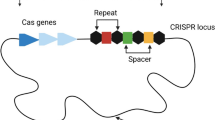Abstract
Erwinia amylovora can rapidly become highly resistant to applications of the antibiotic streptomycin through a single nucleotide mutation in the rpsL gene, which causes an amino acid substitution that prevents inhibitory binding of streptomycin while preserving the functionality of the ribosome. Several viable mutations are described in the literature, but screenings in the orchards consistently revealed that the one leading to the substitution of lysin by arginine at position 43 (K43R) is by far the most abundant. In this work, we tested the rate of emergence of the various spontaneous mutants, their tolerance to different antibiotic concentrations and their general fitness in competition experiments. Furthermore, we developed a molecular assay based on the SNaPshot™ Multiplex Kit from Thermo Fisher Scientific that allows swift determination of rpsL mutations using a single-base primer extension approach directly from colonies on plate. Or results indicate that the prevalence of variant K43R is largely due to fact that it retains the highest environmental fitness even in absence of antibiotic pressure. Sequence analysis of two resistant colonies that did not respond as expected in the SNaPshot™ assay revealed the existence of two yet undescribed rpsL mutations resulting in conditional-lethal streptomycin-dependent (SmD) phenotypes, which are unable to grow in absence of the antibiotic.







Similar content being viewed by others
References
Bjorkman J, Samuelsson P, Andersson I, Hughes D (1999) Novel ribosomal mutations affecting translational accuracy, antibiotic resistance and virulence of Salmonella typhimurium. Mol Microbiol 31:53–58
Chiou C-S, Jones AL (1995) Molecular analysis of high-level streptomycin resistance in Erwinia amylovora. Phytopathology 95(3):324–328
Collins DW, Jukes TH (1994) Rates of transition and Transversion in coding sequences since the human-rodent divergence. Genomics 20(3):386–396 https://doi.org/10.1006/geno.1994.1192
de León Door AP, Romo Chacón A, Muñiz A, C. (2013) Detection of streptomycin resistance in Erwinia amylovora strains isolated from apple orchards in Chihuahua, Mexico. Eur J Plant Pathol 137(2):223–229 https://doi.org/10.1007/s10658-013-0241-4
Förster H, McGhee GC, Sundin GW, Adaskaveg JE (2015) Characterization of streptomycin resistance in isolates of Erwinia amylovora in California. Phytopathology 105(10):1302–1310 https://doi.org/10.1094/PHYTO-03-15-0078-R
McGhee GC, Guasco J, Bellomo LM, Blumer-Schuette SE, Shane WW, Irish-Brown A, Sundin GW (2011) Genetic analysis of streptomycin-resistant (Sm R ) strains of Erwinia amylovora suggests that dissemination of two genotypes is responsible for the current distribution of Sm R E. amylovora in Michigan. Phytopathology 101(2):182–191 https://doi.org/10.1094/PHYTO-04-10-0127
McGhee GC, Sundin GW (2012) Erwinia amylovora CRISPR elements provide new tools for evaluating strain diversity and for microbial source tracking. PLoS One 7(7):e41706 https://doi.org/10.1371/journal.pone.0041706
McManus PS, Stockwell VO, Sundin GW, Jones AL (2002) Antibiotic use in PLANT AGRICULTURE. Annu Rev Phytopathol 40(1):443–465 https://doi.org/10.1146/annurev.phyto.40.120301.093927
Moller WJ, Beutel JA, Reil WO, Zoller BG (1972) Fireblight resistance to streptomycin in California. Phytopathology 62:779
Parcey M, Gayder S, Morley-Senkler V, Bakkeren G, Úrbez-Torres JR, Ali S, Castle AJ, Svircev AM (2020) Comparative genomic analysis of Erwinia amylovora reveals novel insights in phylogenetic arrangement, plasmid diversity, and streptomycin resistance. Genomics, in press https://doi.org/10.1016/j.ygeno.2020.04.001
Pusey PL (1999) Effect of nectar on microbial antagonists evaluated for use in control of fire blight of pome fruits. Phytopathology 89(1):39–46
Rezzonico F, Stockwell VO, Duffy B (2009) Plant agricultural streptomycin formulations do not carry antibiotic resistance genes. Antimicrob Agents Chemother 53(7):3173–3177 https://doi.org/10.1128/AAC.00036-09
Russo NL, Burr TJ, Breth DI, Aldwinckle HS (2008) Isolation of streptomycin resistant isolates of Erwinia amylovora in New York. Plant Dis 92:714–718
Smits THM, Balada SB, Witholt B, van Beilen JB (2002) Functional analysis of alkane hydroxylases from gram-negative and gram-positive bacteria. J Bacteriol 184(6):1733–1742
Smits THM, Guerrero-Prieto VM, Hernández-Escarcega G, Blom J, Goesmann A, Rezzonico F et al (2014) Whole-genome sequencing of Erwinia amylovora strains from México detects SNPs in rpsL conferring streptomycin resistance and in the avrRpt2 effector altering host interactions. Gen Announc 2
Smits THM, Rezzonico F, Kamber T, Blom J, Goesmann A, Frey JE, Duffy B (2010) Complete genome sequence of the fire blight pathogen Erwinia amylovora CFBP 1430 and comparison to other Erwinia species. Mol Plant-Microbe Interact 23:384–393
Tancos KA, Cox KD (2016) Exploring diversity and origins of streptomycin-resistant Erwinia amylovora isolates in New York through CRISPR spacer arrays. Plant Dis 100(7):1307–1313 https://doi.org/10.1094/PDIS-01-16-0088-RE
Vidaver AK (2002) Uses of antimicrobials in Plant Agriculture. Clin Infect Dis 34(s3):S107–S110 https://doi.org/10.1086/340247
von Ahsen N, Oellerich M, Armstrong VW, Schütz E (1999) Application of a thermodynamic nearest-neighbor model to estimate nucleic acid stability and optimize probe design: prediction of melting points of multiple mutations of Apolipoprotein B-3500 and factor V with a hybridization probe genotyping assay on the LightCycler. Clin Chem 45(12):2094–2101 https://doi.org/10.1093/clinchem/45.12.2094
Acknowledgements
This study was funded under project number IZ08Z0_177515 by the r4d Programme of the Swiss Agency for Development and Cooperation (SDC) and the Swiss National Science Foundation (SNSF). We further acknowledge the support of the Department of Life Sciences and Facility Management of the Zurich University of Applied Sciences (ZHAW) in Wädenswil (Switzerland) and the Erasmus Program at Universitat Autónoma de Barcelona that allowed Mireia Marcé Escursell to spend one exchange semester at ZHAW.
Author information
Authors and Affiliations
Corresponding author
Additional information
Publisher’s note
Springer Nature remains neutral with regard to jurisdictional claims in published maps and institutional affiliations.
Electronic supplementary material
ESM 1
(DOCX 409 kb)
Rights and permissions
About this article
Cite this article
Escursell, M.M., Roschi, A., Smits, T.H.M. et al. Characterization and direct molecular discrimination of rpsL mutations leading to high streptomycin resistance in Erwinia amylovora. J Plant Pathol 103 (Suppl 1), 99–108 (2021). https://doi.org/10.1007/s42161-020-00600-8
Received:
Accepted:
Published:
Issue Date:
DOI: https://doi.org/10.1007/s42161-020-00600-8




